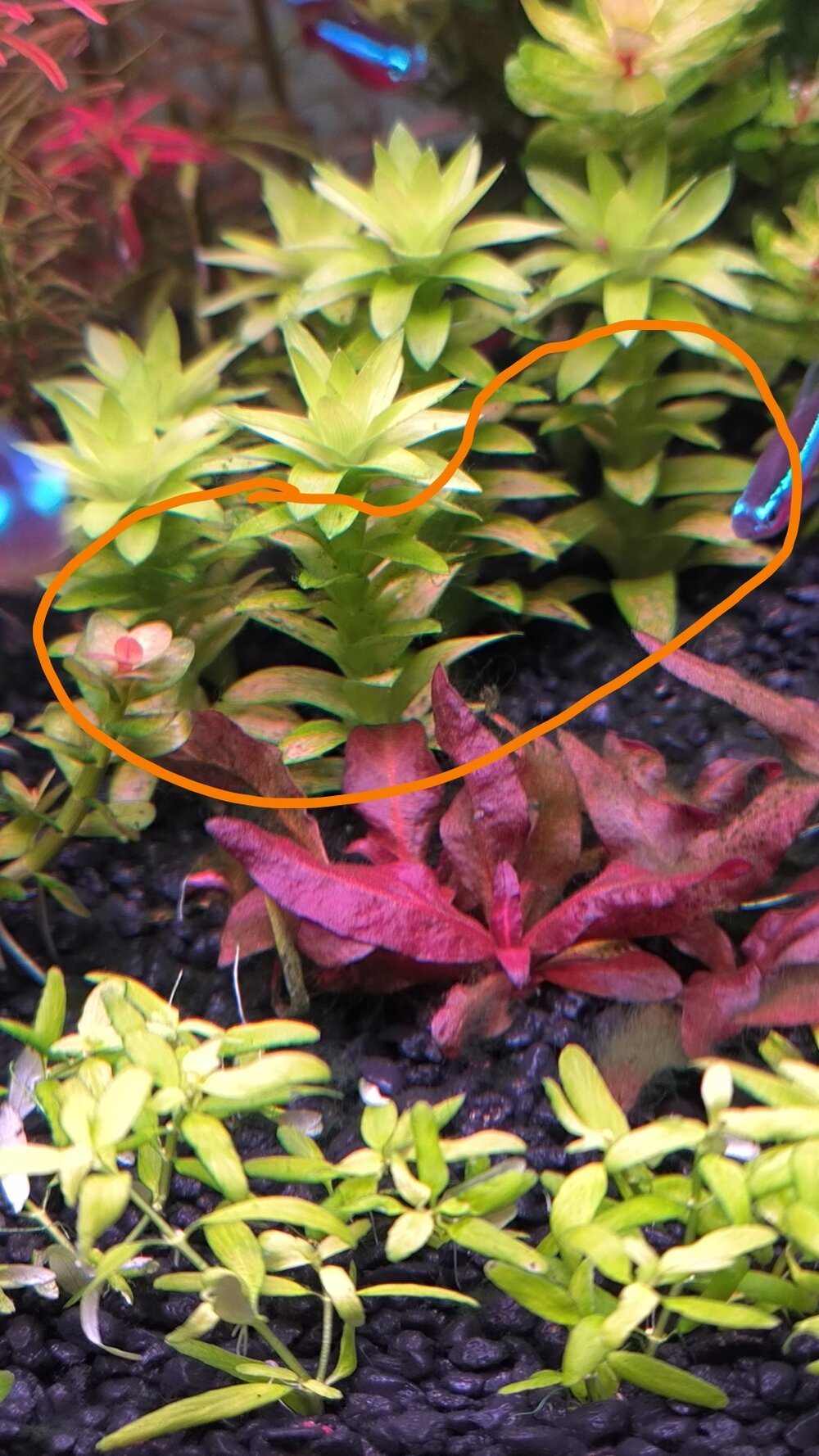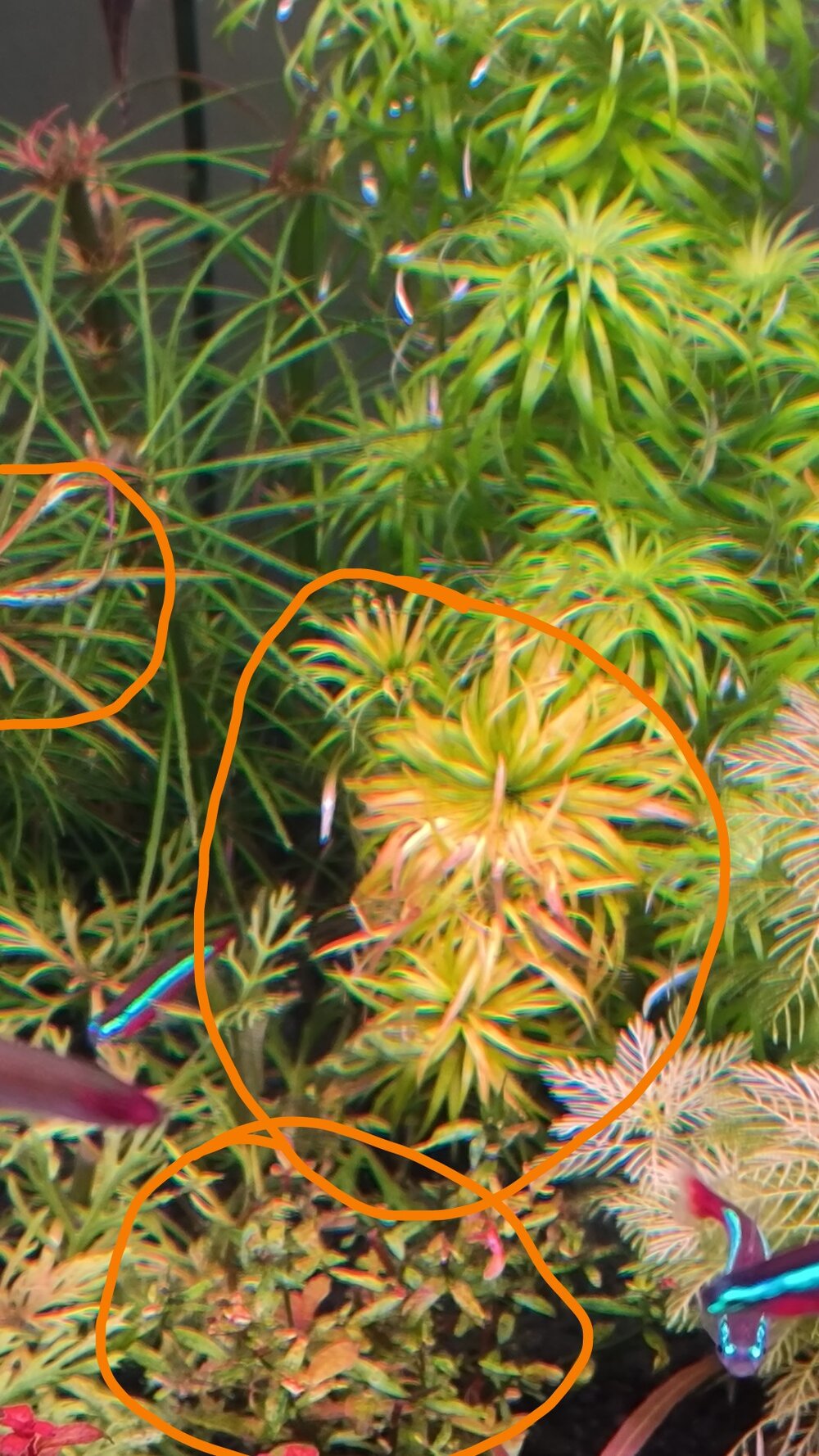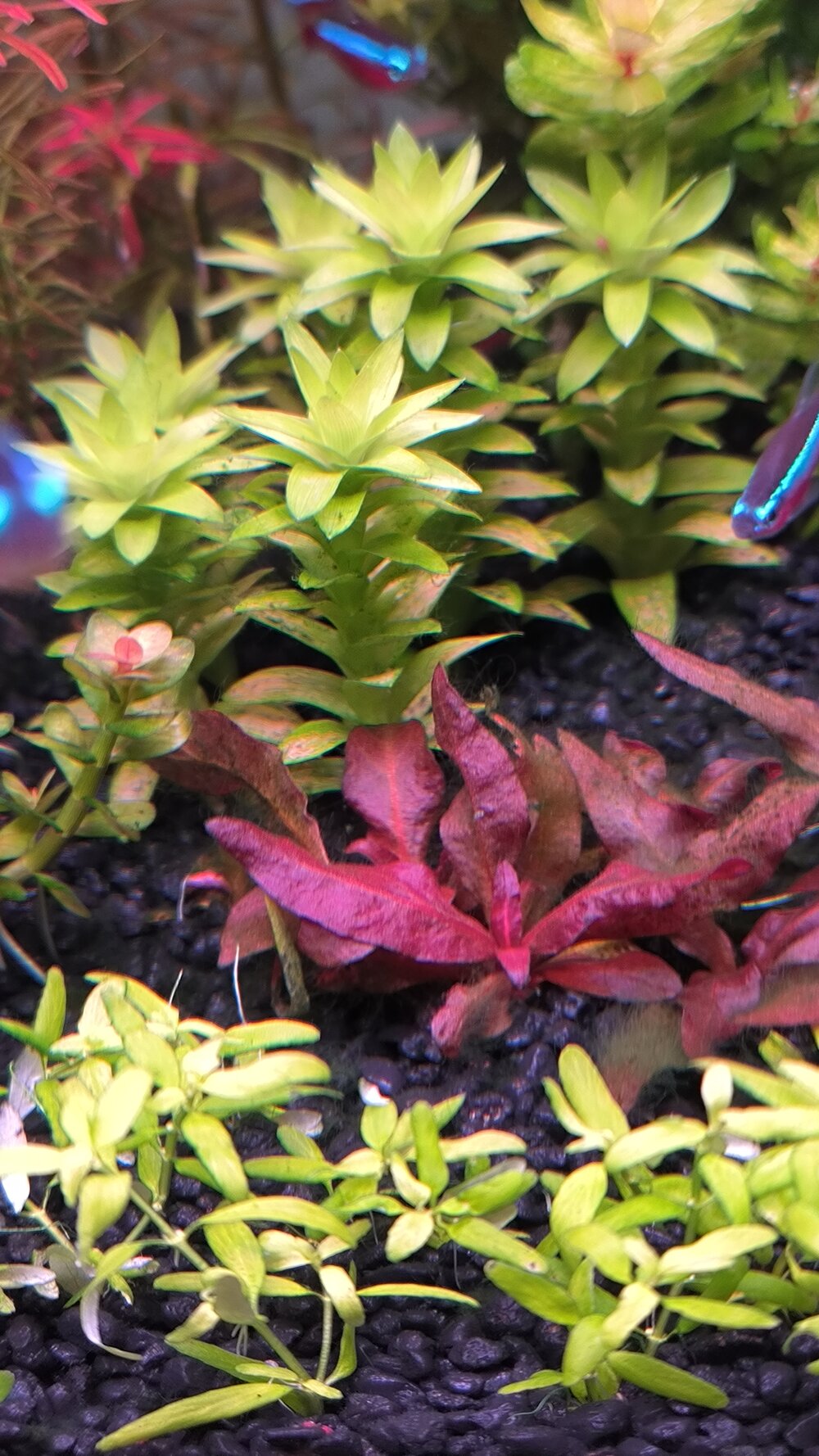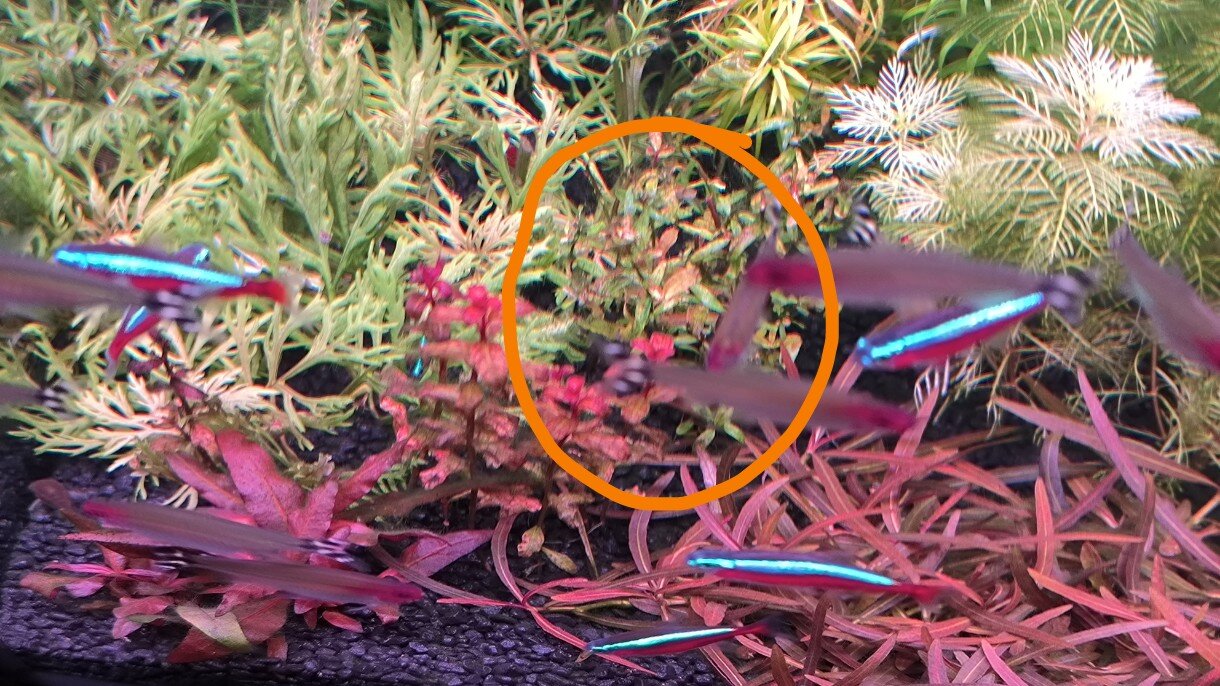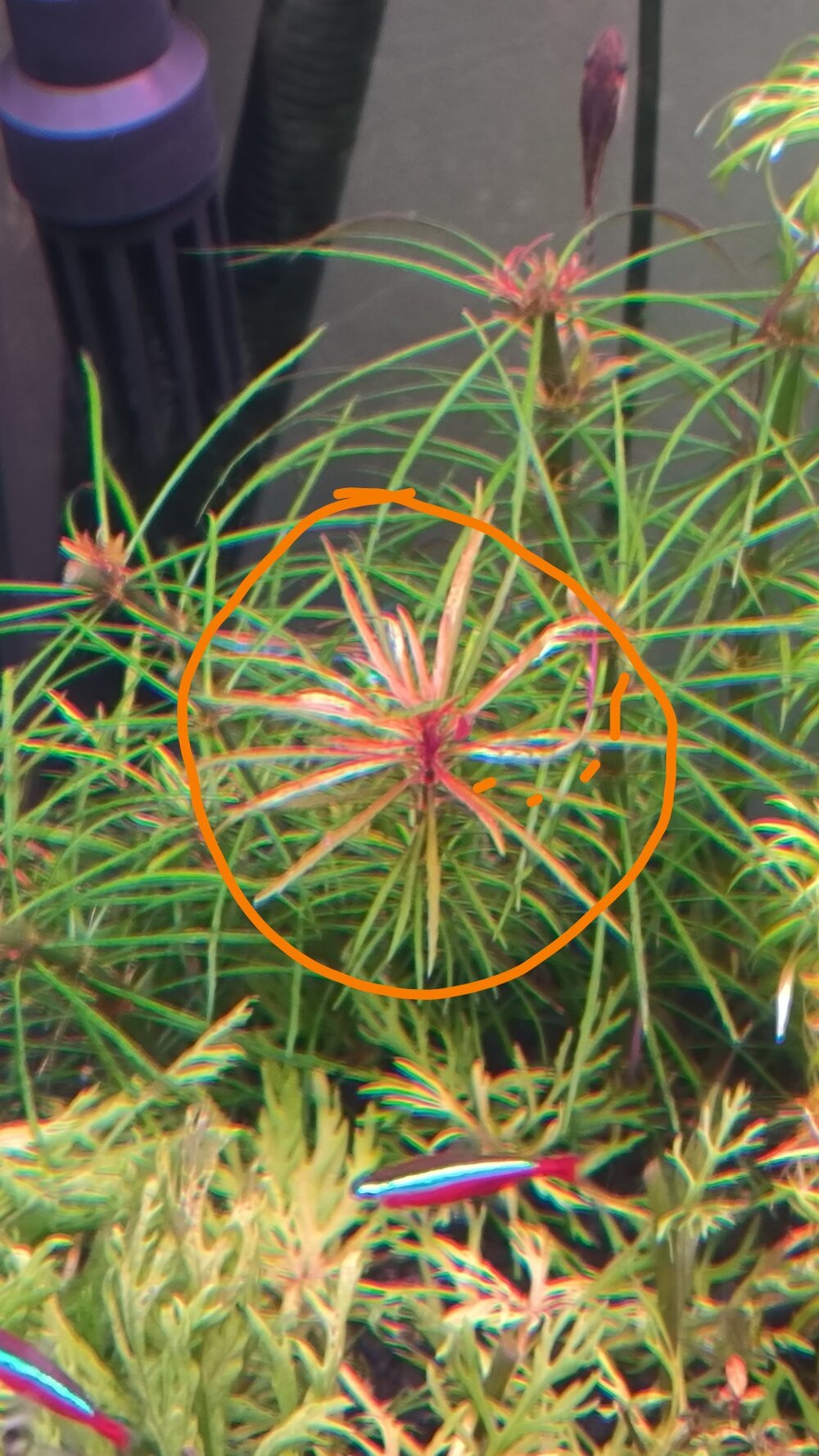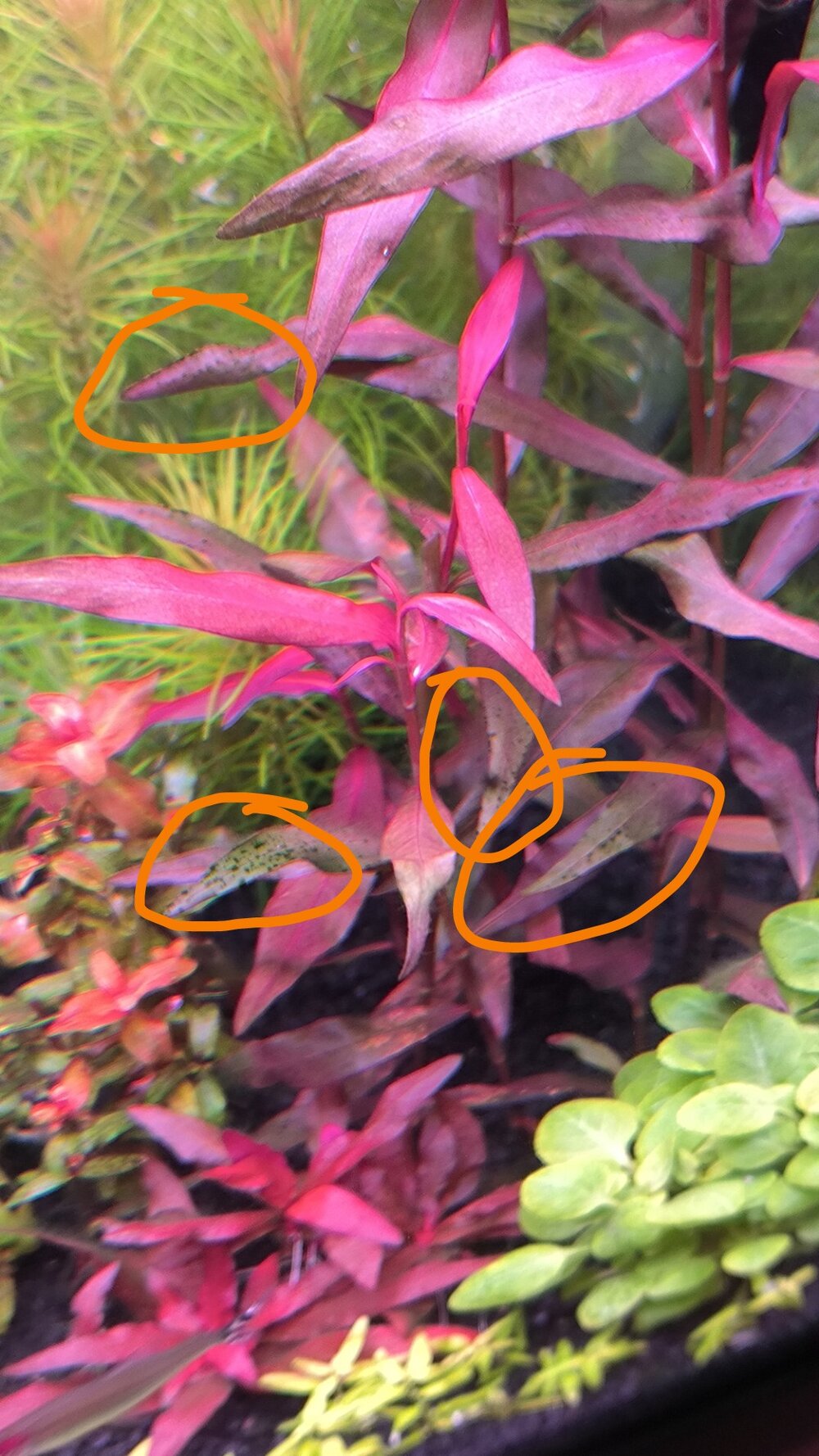Hello friend. Got some issues with some plants. Maybe someone could give a hand?
Problems (See photos)
Tonina fluvialitis-lower parts
Tonina belem-yellowing ,
Rotala mini-no growth
Eusteralis stellata-some holes upper parts.
Sao Paulo - tips unhealthy, some BBA appeared.
*PARAMETERS :
No3 7 (1ppm/day)
Po4 0.8 (0.1ppm Day)
K 18 (18 to water change volume)
Fe 0.7ppm Fe 13%, 0.1ppm Mn /week (intermag micro plus + Fe 13%)
Water change 60%/week
Ph 5.5
Kh 1 (from NaHCO3)
Gh 6
CO2 by macro ph t2 controller 24h
Co2 inline diffuser
N - CANO3, MGNO3, KNO3
P-KH2PO4
K-K2SO4
RO mineraliser GT aqua Gh - (30ca, 10mg) no K no micro, no Kh included.
Chichiros WRGB2 69W+ Chihiros AII 801 30W 10H included 1H Dawn and dusk.
Tank 120L. Created 1Y+ ago.
Toninas tops replanted week ago but I See no inprovement.
Picture of the tank. (problems pics included down)

Problems (See photos)
Tonina fluvialitis-lower parts
Tonina belem-yellowing ,
Rotala mini-no growth
Eusteralis stellata-some holes upper parts.
Sao Paulo - tips unhealthy, some BBA appeared.
*PARAMETERS :
No3 7 (1ppm/day)
Po4 0.8 (0.1ppm Day)
K 18 (18 to water change volume)
Fe 0.7ppm Fe 13%, 0.1ppm Mn /week (intermag micro plus + Fe 13%)
Water change 60%/week
Ph 5.5
Kh 1 (from NaHCO3)
Gh 6
CO2 by macro ph t2 controller 24h
Co2 inline diffuser
N - CANO3, MGNO3, KNO3
P-KH2PO4
K-K2SO4
RO mineraliser GT aqua Gh - (30ca, 10mg) no K no micro, no Kh included.
Chichiros WRGB2 69W+ Chihiros AII 801 30W 10H included 1H Dawn and dusk.
Tank 120L. Created 1Y+ ago.
Toninas tops replanted week ago but I See no inprovement.
Picture of the tank. (problems pics included down)


